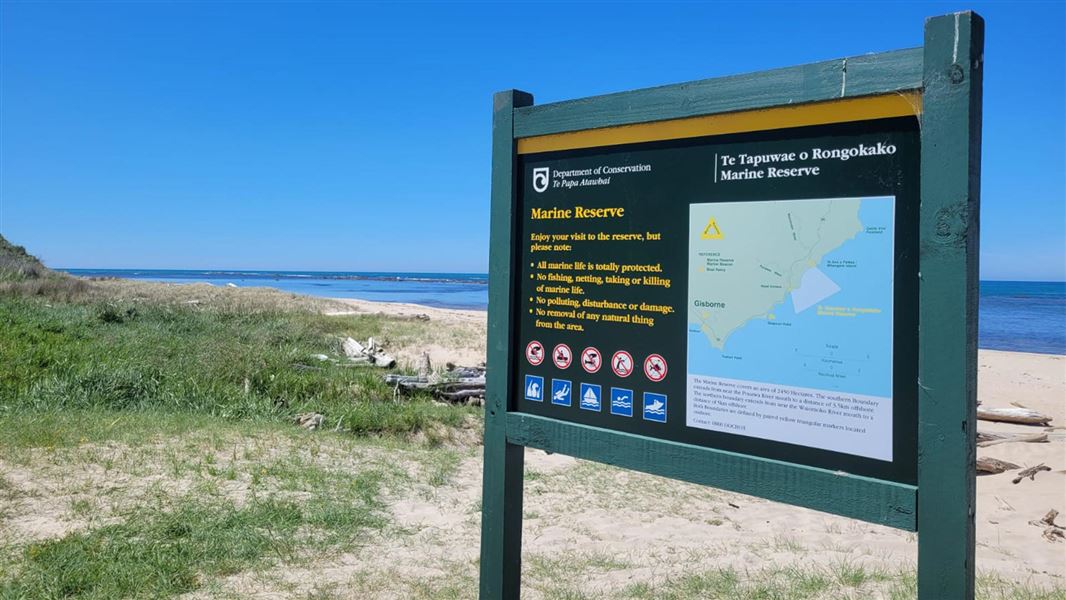‘Brothers in the forest’ – the fight to protect an isolated Amazon tribe – BBC

Report on the Status of Uncontacted Indigenous Peoples and Alignment with Sustainable Development Goals
A Case Study of the Mashco Piro in the Peruvian Amazon
This report examines the increasing pressures faced by the Mashco Piro, an uncontacted indigenous group in the Peruvian Amazon. It analyzes their situation through the lens of the United Nations Sustainable Development Goals (SDGs), highlighting critical challenges to environmental preservation, human health, social equity, and institutional governance.
1.0 Threats to Indigenous Survival and Sustainable Development
A recent report by Survival International identifies significant threats to the world’s remaining uncontacted indigenous groups, including the Mashco Piro. These threats directly contravene several key SDGs.
1.1 Primary Threats and SDG Implications
- Land Encroachment: Logging, mining, and oil drilling destroy the natural habitats essential for survival. This directly undermines SDG 15 (Life on Land) by causing deforestation and biodiversity loss.
- Health Vulnerabilities: Uncontacted peoples lack immunity to common diseases. Contact with outsiders, including loggers, missionaries, or tourists, can lead to devastating epidemics, posing a critical challenge to SDG 3 (Good Health and Well-being). Historical examples, such as the Nahau and Muruhanua peoples in Peru, demonstrate population collapses of up to 50% following first contact.
- Forced Displacement and Conflict: Destruction of their forest territory forces groups like the Mashco Piro into contact with settled communities, leading to conflict and violence. This situation threatens SDG 16 (Peace, Justice and Strong Institutions) by creating instability and insecurity for both indigenous and local populations.
2.0 Analysis of the Mashco Piro Situation
The Mashco Piro’s circumstances vary significantly based on the legal protection afforded to their territory, illustrating a divergence in the application of policies aimed at achieving sustainable and equitable outcomes.
2.1 Unprotected Territories: The Case of Nueva Oceania
In the region near the village of Nueva Oceania, the Mashco Piro’s land is not a designated reserve, leaving it vulnerable to commercial logging. This has led to a series of negative impacts aligned with failures in SDG implementation.
- Resource Depletion and Food Insecurity: Continuous logging operations disrupt the ecosystem, threatening the Mashco Piro’s access to food and resources, which is a direct challenge to SDG 2 (Zero Hunger) and SDG 1 (No Poverty).
- Increased Human-Wildlife Conflict: Displacement from their traditional lands forces the Mashco Piro closer to communities like Nueva Oceania, resulting in fear and violent encounters. A 2022 attack on two loggers, one fatal, underscores the breakdown of peace, a core tenet of SDG 16.
- Ineffective Governance: Residents feel abandoned by the government, forced to manage a tense situation independently. The failure to ratify a 2016 bill that would extend the Mashco Piro reserve highlights an institutional weakness in protecting vulnerable populations, further impacting SDG 16 and SDG 10 (Reduced Inequalities).
2.2 Protected Territories: The Nomole Control Post
In contrast, a government control post on the Manu River, located within a recognized forest reserve, demonstrates a more structured approach to managing the state’s non-contact policy and upholding SDG principles.
- Institutional Presence (SDG 16): The post, run by the Ministry of Culture and the indigenous rights group Fenamad, was established to mitigate conflict. Agents monitor interactions and provide a buffer between the Mashco Piro and the outside world.
- Managed Interaction and Health Protection (SDG 3): Agents manage requests for food from the Mashco Piro, reducing the likelihood of uncontrolled and dangerous contact with tourists or locals, thereby protecting them from disease.
- Cultural Preservation and Inequality Reduction (SDG 10): While limited, the interaction allows for a degree of understanding and respect for the Mashco Piro’s desire to remain isolated, acknowledging their right to self-determination. However, this stability is threatened by a proposed new road that could introduce illegal mining and other pressures, jeopardizing progress on SDG 15 and SDG 16.
3.0 Conclusion: Indigenous Rights as a Cornerstone of Sustainable Development
The plight of the Mashco Piro serves as a critical indicator of progress toward the Sustainable Development Goals. Protecting uncontacted indigenous peoples is not merely a matter of human rights but is intrinsically linked to the preservation of biodiversity, the promotion of public health, and the establishment of peaceful and just societies. Failure to legally protect their territories, as seen near Nueva Oceania, directly undermines global commitments to SDG 10 (Reduced Inequalities), SDG 15 (Life on Land), and SDG 16 (Peace, Justice and Strong Institutions). Effective governance and the legal recognition of indigenous lands are essential for ensuring that these vulnerable populations can continue to exist and that the ecosystems they steward are preserved for future generations.
Analysis of Sustainable Development Goals in the Article
1. Which SDGs are addressed or connected to the issues highlighted in the article?
-
SDG 3: Good Health and Well-being
The article highlights the extreme health vulnerabilities of uncontacted indigenous groups like the Mashco Piro. It explicitly states they are “extremely vulnerable to basic disease” and that historical contact with other groups, such as the Nahau and Muruhanua people, resulted in catastrophic population decline, with “50% of their population died within a matter of years.” This directly connects to the goal of ensuring healthy lives and promoting well-being for all, especially for highly vulnerable populations.
-
SDG 10: Reduced Inequalities
The Mashco Piro are presented as a marginalized and vulnerable group whose rights, culture, and existence are threatened by external economic activities and lack of government protection. The article discusses the failure to sign a 2016 bill into law that would extend their reserve, illustrating a lack of political inclusion and protection. This relates to the goal of reducing inequality within and among countries by empowering and promoting the inclusion of all, irrespective of ethnicity or origin.
-
SDG 15: Life on Land
The survival of the Mashco Piro is intrinsically linked to the health of the Amazonian rainforest. The article identifies “logging, mining or drilling for oil” as the biggest risks to their existence. It notes that “the noise of logging machinery can be heard day and night, and the Mashco Piro people are seeing their forest disturbed and destroyed.” This directly addresses the goal of protecting, restoring, and promoting the sustainable use of terrestrial ecosystems and halting deforestation and biodiversity loss.
-
SDG 16: Peace, Justice and Strong Institutions
The article describes violent conflicts arising from encroachment on the Mashco Piro’s territory, including an attack in 2022 where two loggers were attacked and one was found “dead days later with nine arrow wounds.” It also points to institutional failures, such as the government leaving local villagers “to handle a tense situation by themselves” and not enacting the 2016 bill to create a protected reserve. This connects to the goal of promoting peaceful societies, reducing violence, and building effective, accountable, and inclusive institutions.
2. What specific targets under those SDGs can be identified based on the article’s content?
-
Targets under SDG 3 (Good Health and Well-being)
- Target 3.3: End the epidemics of AIDS, tuberculosis, malaria and neglected tropical diseases and combat hepatitis, water-borne diseases and other communicable diseases. The article’s focus on the Mashco Piro being “wiped out by disease” upon contact directly relates to the need to prevent the spread of communicable diseases to immunologically vulnerable populations.
- Target 3.d: Strengthen the capacity of all countries, in particular developing countries, for early warning, risk reduction and management of national and global health risks. The Peruvian government’s “policy of non-contact” is a direct attempt to manage the health risks associated with contacting isolated peoples.
-
Targets under SDG 10 (Reduced Inequalities)
- Target 10.2: By 2030, empower and promote the social, economic and political inclusion of all, irrespective of age, sex, disability, race, ethnicity, origin, religion or economic or other status. The entire article is about the struggle to protect the Mashco Piro, a distinct ethnic group, and ensure their right to self-isolation and cultural survival is respected.
-
Targets under SDG 15 (Life on Land)
- Target 15.2: By 2020, promote the implementation of sustainable management of all types of forests, halt deforestation, restore degraded forests and substantially increase afforestation and reforestation globally. The threat from logging companies operating in the area and destroying the forest directly contravenes this target.
- Target 15.5: Take urgent and significant action to reduce the degradation of natural habitats, halt the loss of biodiversity and, by 2020, protect and prevent the extinction of threatened species. The protection of the Mashco Piro’s habitat is essential for their survival and the preservation of their unique culture, which is a form of human and cultural biodiversity.
-
Targets under SDG 16 (Peace, Justice and Strong Institutions)
- Target 16.1: Significantly reduce all forms of violence and related death rates everywhere. The article mentions killings resulting from conflict between the Mashco Piro and local villages, as well as the death of a logger in 2022, highlighting the need to reduce this violence.
- Target 16.b: Promote and enforce non-discriminatory laws and policies for sustainable development. The failure to sign the 2016 bill to extend the Mashco Piro’s reserve into law is a clear example of a failure to enforce policies designed to protect a vulnerable, indigenous group.
3. Are there any indicators mentioned or implied in the article that can be used to measure progress towards the identified targets?
-
Indicators for SDG 3 (Good Health and Well-being)
- Implied Indicator: Mortality rates of indigenous populations following first contact. The article provides historical data as a stark measure: “In the 1980s, when the Nahau people in Peru made initial contact with the world outside, 50% of their population died within a matter of years.”
-
Indicators for SDG 10 (Reduced Inequalities)
- Implied Indicator: Existence and enforcement of legal frameworks protecting indigenous peoples’ rights. The status of the “government bill passed in 2016 to extend the Mashco Piro’s reserve” which has “never been signed into law” serves as a direct, negative indicator of progress.
-
Indicators for SDG 15 (Life on Land)
- Implied Indicator: Rate of deforestation in indigenous territories. The article provides qualitative evidence of deforestation, such as “the noise of logging machinery can be heard day and night” and the observation that their “forests are being finished off – destroyed.”
- Implied Indicator: Area of land designated as protected for indigenous groups. The article discusses the establishment of a “forest reserve” by the Manu River and the stalled effort to create another one that would include Nueva Oceania.
-
Indicators for SDG 16 (Peace, Justice and Strong Institutions)
- Mentioned Indicator: Number of violent deaths resulting from conflict. The article explicitly mentions the death of a logger in 2022 and “several killings” that led to the creation of the Nomole control post in 2013.
SDG Analysis Summary Table
| SDGs | Targets | Indicators |
|---|---|---|
| SDG 3: Good Health and Well-being |
|
|
| SDG 10: Reduced Inequalities |
|
|
| SDG 15: Life on Land |
|
|
| SDG 16: Peace, Justice and Strong Institutions |
|
|
Source: bbc.com
What is Your Reaction?
 Like
0
Like
0
 Dislike
0
Dislike
0
 Love
0
Love
0
 Funny
0
Funny
0
 Angry
0
Angry
0
 Sad
0
Sad
0
 Wow
0
Wow
0


















































.jpg.webp?itok=0ZsAnae9#)






/environment-climate-change-and-health-(ech)/water-sanitation-hygiene-and-health-(wsh)/landfill-tuvalu-36092.tmb-1200v.jpg?sfvrsn=5c21fe40_1#)


















